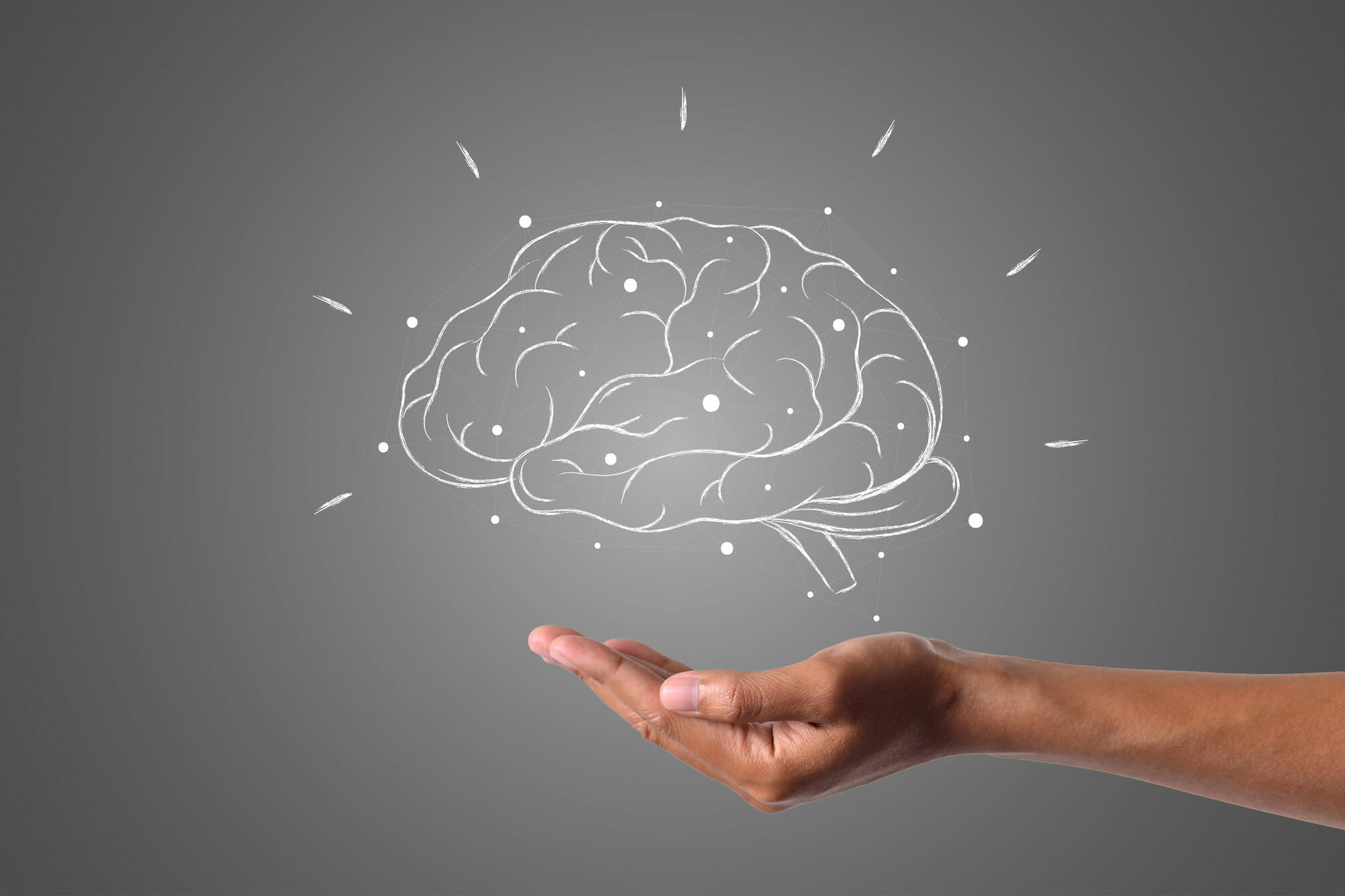How to optimize muscle recovery in old age
Muscle mass, strength, and function decline with age and can have consequences for longevity. But there are several strategies to counteract this

When you're young, training and building muscles are top priorities for both health and aesthetic reasons. Unfortunately, our muscle mass, strength, and function decline with age. After age 30, our muscle mass decreases at a rate of around 3-8%, and at 60 years of age, the decline is even faster.
Although this is a natural and seemingly unavoidable aspect of aging, muscle loss can have disastrous consequences for longevity. Age-related muscle atrophy, also known as sarcopenia, significantly increases the risk of falls and injuries.
Thankfully, our muscles remain plastic and adaptable even as we age, and there are multiple strategies to improve muscle mass and recovery time.
Muscles and Mitochondria
It is assumed that the cause of sarcopenia in old age is multifactorial and that hormonal and dietary changes as well as increasing inactivity play a role.
Our mitochondria, the so-called powerhouses of cells, are an important factor in muscle aging. Considering that they provide our body with energy, it is not surprising that mitochondria are most concentrated in muscle cells.
However, as we age, mitochondria tend to malfunction, which impairs our energy supply. In fact, mitochondrial dysfunction is one of the nine hallmarks of aging.
What happens during muscle recovery?
During weight training, muscles are forced to contract and stretch as much and as quickly as possible, resulting in microscopic cracks in muscle tissue. These cracks get bigger and bigger depending on the intensity of the workout. While this is a natural process that allows muscles to grow, it also explains why intensive training must be followed by rest and recovery.
During exercise, the body uses up its glycogen stores for energy, which results in a buildup of lactic acid in the cells. During intensive training, we can sometimes feel this accumulation. Lactic acid can cause sore muscles and is another good reason why muscles need to recover to remove lactic acid from cells.
That is why it is important to plan a day of rest and relaxation for every day of intensive training. During muscle recovery, satellite cells work to repair the microscopic muscle tears. They multiply at the site of damage and grow into mature cells, which fuse with the damaged muscle fibers. This creates new muscle protein strands that increase the size and strength of the muscles and prepare them for the next workout.
The best ways to promote muscle recovery
There are several strategies to reduce muscle loss in old age and promote muscle recovery. Fortunately, they all support a healthy lifestyle that can improve health and life expectancy:
Regular exercise and weight training
It is generally recommended to exercise at least 150 minutes per week and build muscle for 2 days. This includes lifting weights, using resistance bands, using your own body weight, some types of yoga, and even heavy gardening! Studies have shown that both aerobic and strength-oriented exercise improves muscle mass, strength, and function and counteracts sarcopenia in older adults.
Chill
Muscle recovery is considered as important as muscle training itself. For healthy muscle recovery, it is essential that we know the limits during training to limit muscle strain and that rest days are planned between workouts. The recovery time that the body needs varies depending on the person and training intensity. Light aerobic exercise may only take 24 hours, while more strenuous weight training can take up to two to three days for the muscles to fully recover. A varied workout that involves changing the type of activity or the focus of the muscle group can also help.
Diet
Although a balanced diet is generally important, it is particularly important for muscle recovery in old age. Different food groups have different properties that are beneficial to muscle recovery. Eating healthy sources of protein, such as oily fish, helps rebuild muscle fibers. Carbohydrates, on the other hand, replenish used glycogen stores. Combining a varied exercise program with a diet rich in calories and protein can promote muscle growth and reduce insulin resistance, which is common among older people.
Supplements
While protein powder and pre-workout powder provide the body with energy, new so-called longevity supplements have become established, which have the potential to regenerate muscles. One such supplement is urolithin A (UA). UA promotes cell health by increasing mitophagy (the selective breakdown of mitochondria through autophagy) and mitochondrial function, and reducing harmful inflammation. Several preclinical studies show how UA protects against aging and age-related diseases of muscles, brain, joints, and other organs. In humans, the benefits of UA supplementation in muscles are supported by recent clinical trials involving older people.
Things to avoid
Sometimes you feel like your muscles are taking longer than usual to recover from training and that you really feel your age. This can be influenced by a number of factors, such as the intensity of the workout and your own physical fitness. Lifestyle habits such as sleep, stress, and diet can also influence recovery rates. It is beneficial anyway to restrict alcohol and tobacco to ensure a long life, as these substances can also impair the musculoskeletal system and prevent effective muscle recovery.
It is important not to rush muscle recovery because reducing the recovery time after a workout puts stress on the muscles while they are in a sub-optimal state. As fitness increases, the time required for muscles to recover after a workout should become shorter and shorter. When activity is increased and the body is gradually encouraged to perform more, the muscles recover better and are retained, especially in old age.
References
- Volpi, E., Nazemi, R. & Fujita, S. (2004). Muscle tissue changes with aging. Current Opinion in Clinical Nutrition and Metabolic Care, 7(4), 405—410. https://doi.org/10.1097/01.mco.0000134362.76653.b2
- D'Amico, D., Andreux, P.A., Valdés, P., Singh, A., Rinsch, C. & Auwerx, J. (2021). Impact of the Natural Compound Urolithin A on Health, Disease, and Aging. Trends in Molecular Medicine, 27(7), 687—699. https://doi.org/10.1016/j.molmed.2021.04.009
- Liu, S., D'Amico, D., Shankland, E., Bhayana, S., Garcia, J.M., Aebischer, P., Rinsch, C., Singh, A. & Marcinek, D.J. (2022). Effect of Urolithin A Supplementation on Muscle Endurance and Mitochondrial Health in Older Adults. JAMA Network Open, 5(1), e2144279. https://doi.org/10.1001/jamanetworkopen.2021.44279
Publiziert
8.12.2024
Kategorie
Health

Experte
When you're young, training and building muscles are top priorities for both health and aesthetic reasons. Unfortunately, our muscle mass, strength, and function decline with age. After age 30, our muscle mass decreases at a rate of around 3-8%, and at 60 years of age, the decline is even faster.
Although this is a natural and seemingly unavoidable aspect of aging, muscle loss can have disastrous consequences for longevity. Age-related muscle atrophy, also known as sarcopenia, significantly increases the risk of falls and injuries.
Thankfully, our muscles remain plastic and adaptable even as we age, and there are multiple strategies to improve muscle mass and recovery time.
Muscles and Mitochondria
It is assumed that the cause of sarcopenia in old age is multifactorial and that hormonal and dietary changes as well as increasing inactivity play a role.
Our mitochondria, the so-called powerhouses of cells, are an important factor in muscle aging. Considering that they provide our body with energy, it is not surprising that mitochondria are most concentrated in muscle cells.
However, as we age, mitochondria tend to malfunction, which impairs our energy supply. In fact, mitochondrial dysfunction is one of the nine hallmarks of aging.
What happens during muscle recovery?
During weight training, muscles are forced to contract and stretch as much and as quickly as possible, resulting in microscopic cracks in muscle tissue. These cracks get bigger and bigger depending on the intensity of the workout. While this is a natural process that allows muscles to grow, it also explains why intensive training must be followed by rest and recovery.
During exercise, the body uses up its glycogen stores for energy, which results in a buildup of lactic acid in the cells. During intensive training, we can sometimes feel this accumulation. Lactic acid can cause sore muscles and is another good reason why muscles need to recover to remove lactic acid from cells.
That is why it is important to plan a day of rest and relaxation for every day of intensive training. During muscle recovery, satellite cells work to repair the microscopic muscle tears. They multiply at the site of damage and grow into mature cells, which fuse with the damaged muscle fibers. This creates new muscle protein strands that increase the size and strength of the muscles and prepare them for the next workout.
The best ways to promote muscle recovery
There are several strategies to reduce muscle loss in old age and promote muscle recovery. Fortunately, they all support a healthy lifestyle that can improve health and life expectancy:
Regular exercise and weight training
It is generally recommended to exercise at least 150 minutes per week and build muscle for 2 days. This includes lifting weights, using resistance bands, using your own body weight, some types of yoga, and even heavy gardening! Studies have shown that both aerobic and strength-oriented exercise improves muscle mass, strength, and function and counteracts sarcopenia in older adults.
Chill
Muscle recovery is considered as important as muscle training itself. For healthy muscle recovery, it is essential that we know the limits during training to limit muscle strain and that rest days are planned between workouts. The recovery time that the body needs varies depending on the person and training intensity. Light aerobic exercise may only take 24 hours, while more strenuous weight training can take up to two to three days for the muscles to fully recover. A varied workout that involves changing the type of activity or the focus of the muscle group can also help.
Diet
Although a balanced diet is generally important, it is particularly important for muscle recovery in old age. Different food groups have different properties that are beneficial to muscle recovery. Eating healthy sources of protein, such as oily fish, helps rebuild muscle fibers. Carbohydrates, on the other hand, replenish used glycogen stores. Combining a varied exercise program with a diet rich in calories and protein can promote muscle growth and reduce insulin resistance, which is common among older people.
Supplements
While protein powder and pre-workout powder provide the body with energy, new so-called longevity supplements have become established, which have the potential to regenerate muscles. One such supplement is urolithin A (UA). UA promotes cell health by increasing mitophagy (the selective breakdown of mitochondria through autophagy) and mitochondrial function, and reducing harmful inflammation. Several preclinical studies show how UA protects against aging and age-related diseases of muscles, brain, joints, and other organs. In humans, the benefits of UA supplementation in muscles are supported by recent clinical trials involving older people.
Things to avoid
Sometimes you feel like your muscles are taking longer than usual to recover from training and that you really feel your age. This can be influenced by a number of factors, such as the intensity of the workout and your own physical fitness. Lifestyle habits such as sleep, stress, and diet can also influence recovery rates. It is beneficial anyway to restrict alcohol and tobacco to ensure a long life, as these substances can also impair the musculoskeletal system and prevent effective muscle recovery.
It is important not to rush muscle recovery because reducing the recovery time after a workout puts stress on the muscles while they are in a sub-optimal state. As fitness increases, the time required for muscles to recover after a workout should become shorter and shorter. When activity is increased and the body is gradually encouraged to perform more, the muscles recover better and are retained, especially in old age.
Experte
Referenzen
- Volpi, E., Nazemi, R. & Fujita, S. (2004). Muscle tissue changes with aging. Current Opinion in Clinical Nutrition and Metabolic Care, 7(4), 405—410. https://doi.org/10.1097/01.mco.0000134362.76653.b2
- D'Amico, D., Andreux, P.A., Valdés, P., Singh, A., Rinsch, C. & Auwerx, J. (2021). Impact of the Natural Compound Urolithin A on Health, Disease, and Aging. Trends in Molecular Medicine, 27(7), 687—699. https://doi.org/10.1016/j.molmed.2021.04.009
- Liu, S., D'Amico, D., Shankland, E., Bhayana, S., Garcia, J.M., Aebischer, P., Rinsch, C., Singh, A. & Marcinek, D.J. (2022). Effect of Urolithin A Supplementation on Muscle Endurance and Mitochondrial Health in Older Adults. JAMA Network Open, 5(1), e2144279. https://doi.org/10.1001/jamanetworkopen.2021.44279
Publiziert
8.12.2024
Kategorie
Health

.svg)














